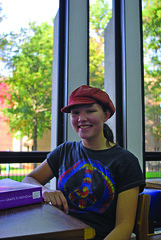Mirroring national trends, the newest Owls are the brightest yet, according to SATs and GPAs.
Historically, the best universities attract the best and brightest students.

But, in the depths of the nation’s recession, colleges are not unaffected by the tightening of purse strings. State-affiliated schools tend to see an increase in the applicant pool when the economy turns sour, allowing them to be more selective.
Temple’s 2009 freshman class, set to graduate in 2013, holds the distinction of being the “most qualified class” in the university’s history, according to a report issued by the Office of News Communications.
With the high school GPA and SAT scores of Temple freshmen steadily increasing in recent years, the university’s growing academic stature cannot be disregarded as a possible factor in the class’ record-high averages of an 1109-point SAT score and a 3.4 GPA.
Recent recruitment success can also be attributed to the broader national trends.
In 2009, the U.S. saw the highest number of college-bound high school graduates on record, which was reflected in the high number of applications received by the university’s Office of Undergraduate Admissions.
Similarly, Penn State saw a 3 percent increase in applications last spring.
Despite last month’s fears of funding cuts, Temple’s relatively low price and generous financial aid offer appealing relief from the price tags of its smaller, private counterparts.
That appealing relief attracted freshman social work major Rebecca Van Benthem.
“Price was definitely a factor,” she said of her decision to attend Temple. “Almost all of my tuition is paid by financial aid.”
Van Benthem is certainly not alone. Cost has become the driving factor in deciding where to matriculate, according to research conducted by the National Center for Public Policy and Higher Education.
Private institutions, though, have not fared as well.
In a study released just before the Spring 2009 application period, 2/3 of private colleges were “very concerned” about decreasing enrollment, according to the National Association of Independent Colleges and Universities. Typically located in more suburban or rural areas, they lack Temple’s advantage of attracting commuter students.
Donald Hoegg can be reached at donald.hoegg@temple.edu.


Be the first to comment